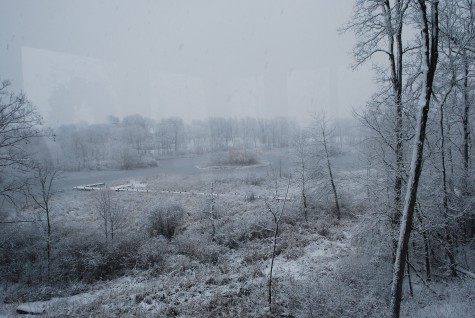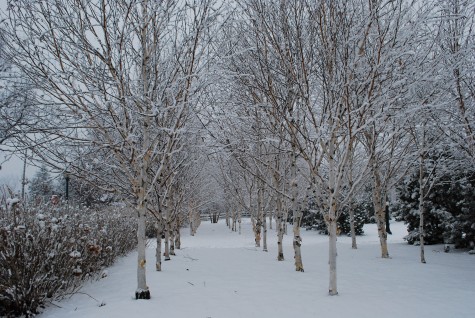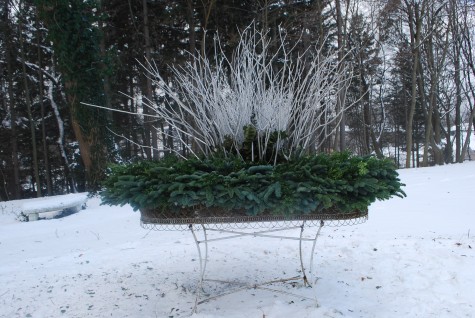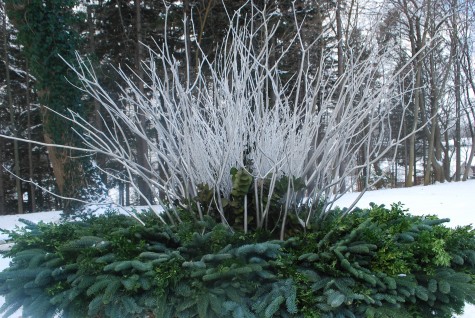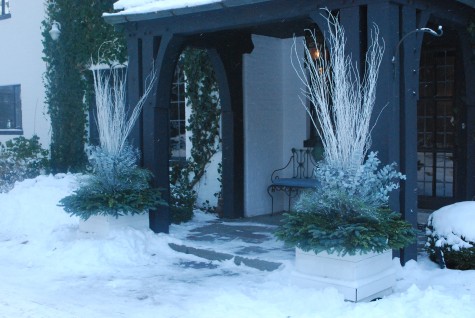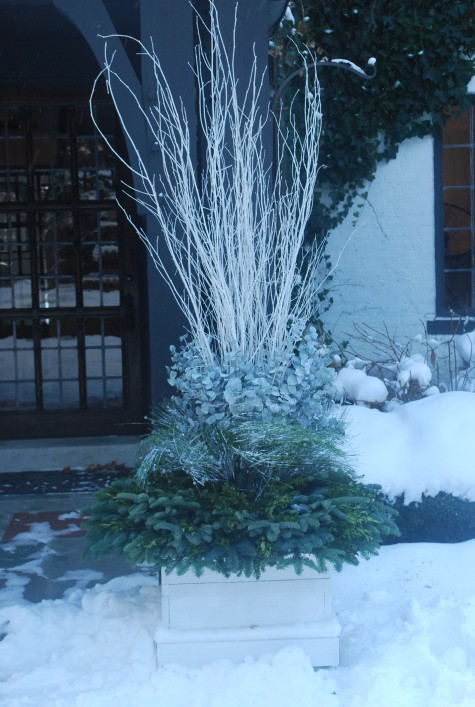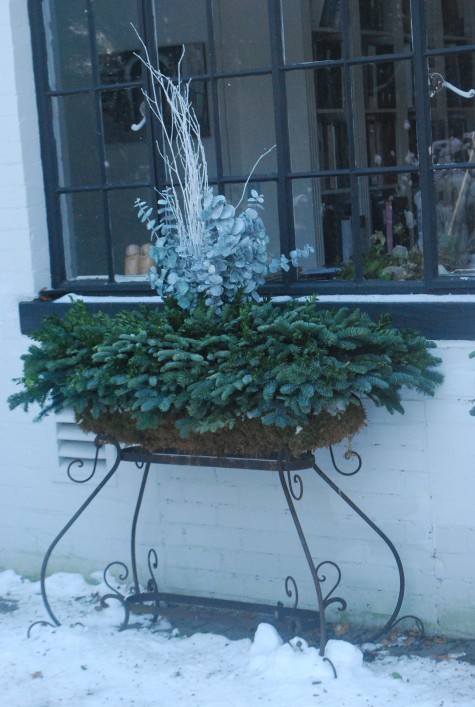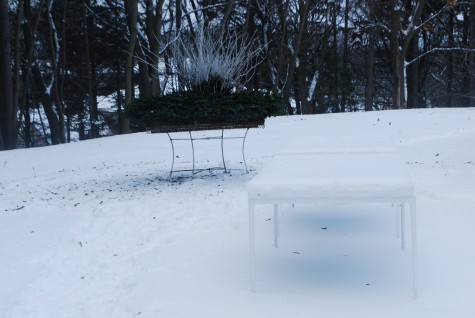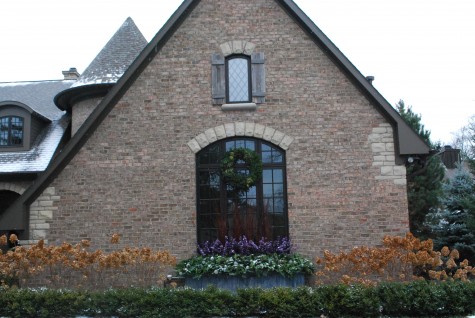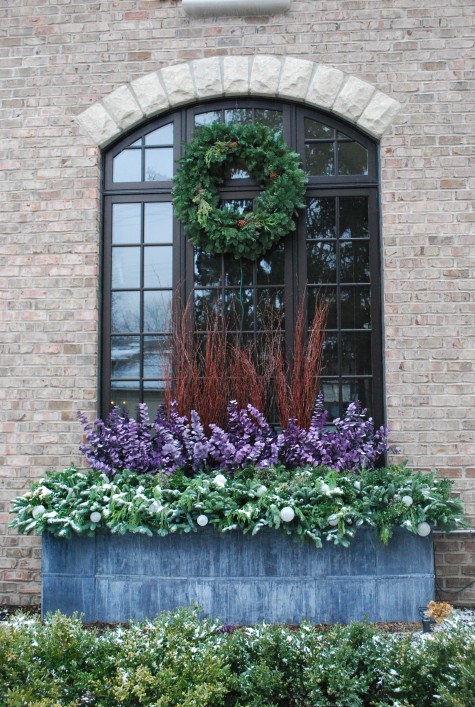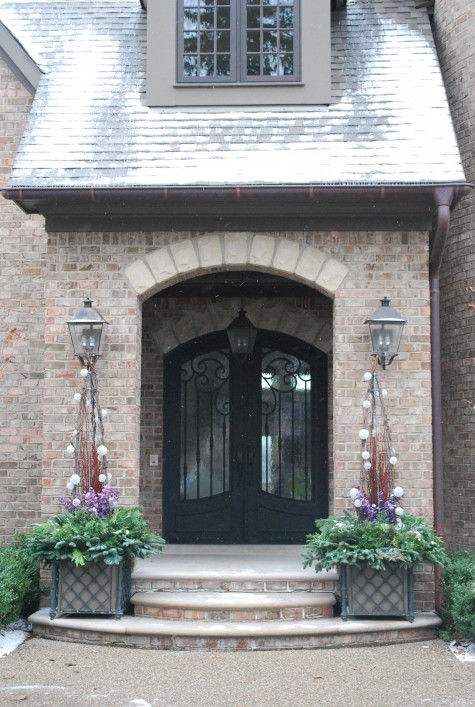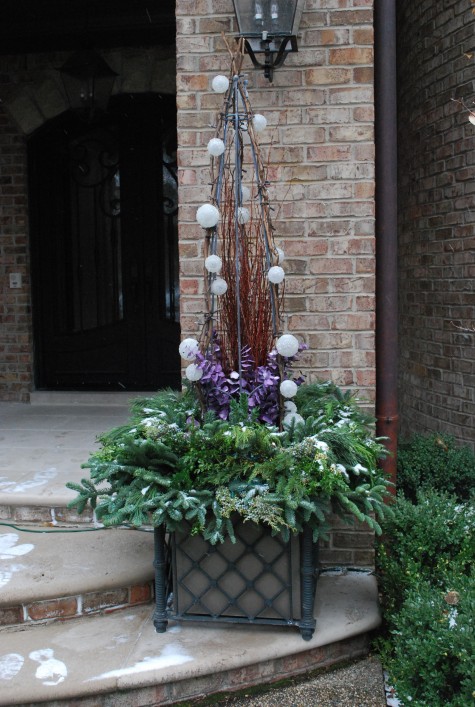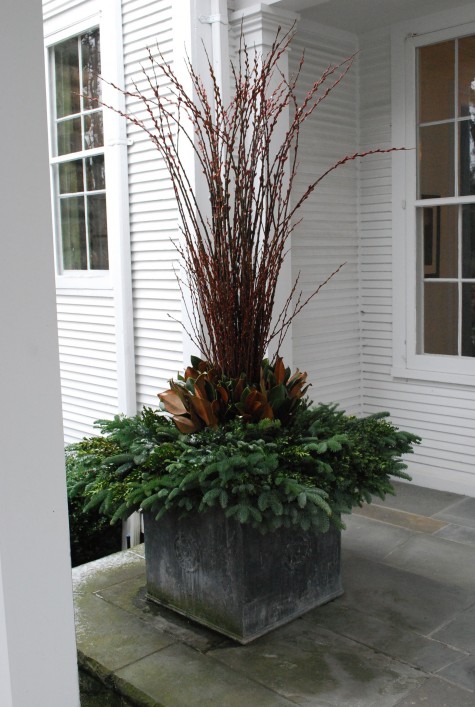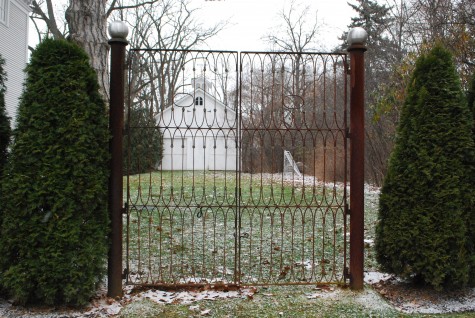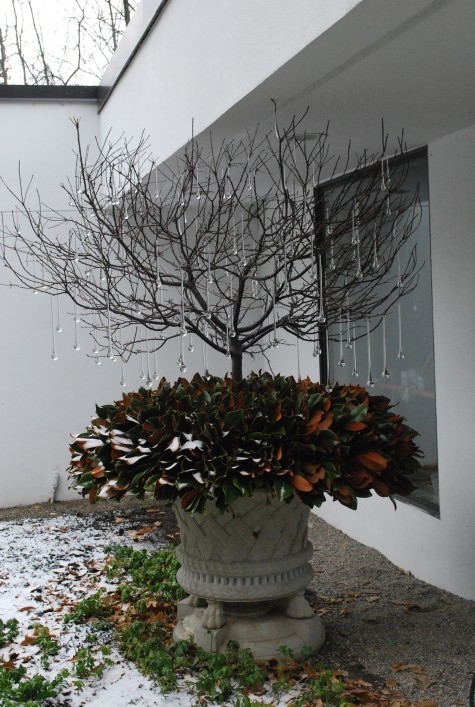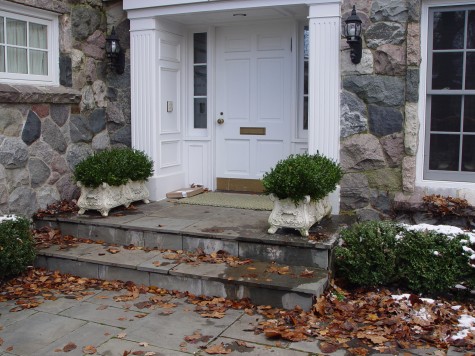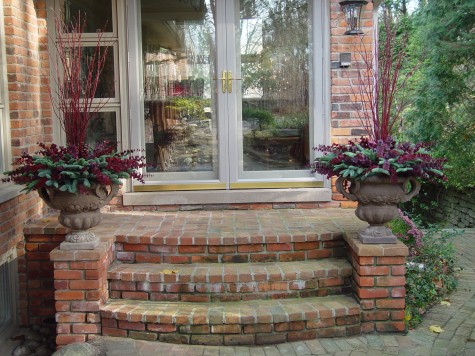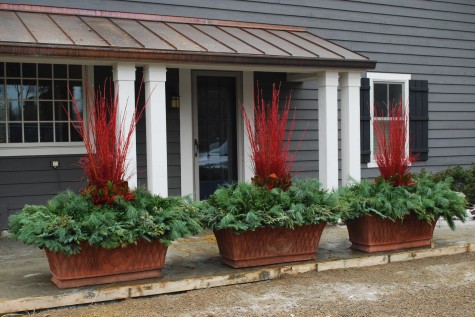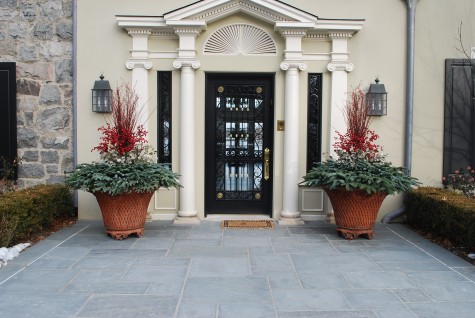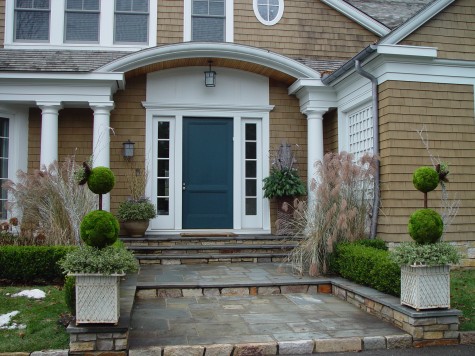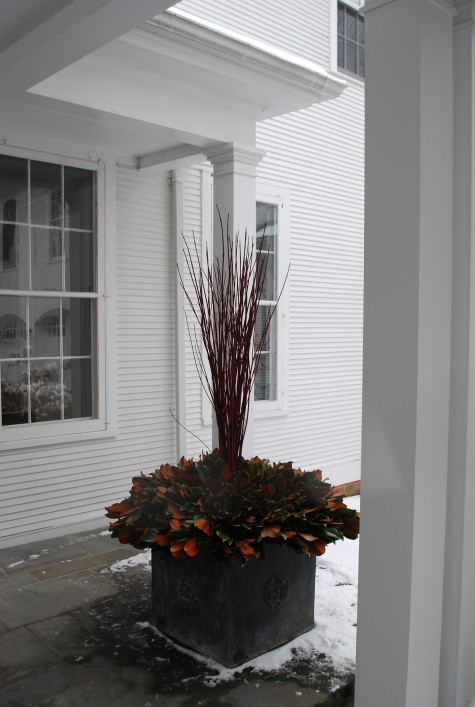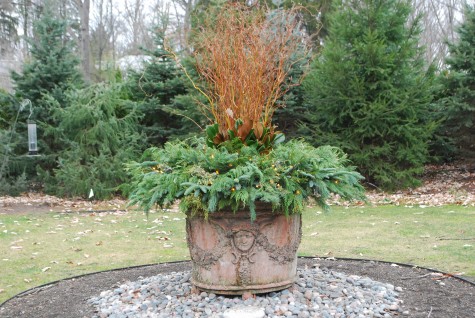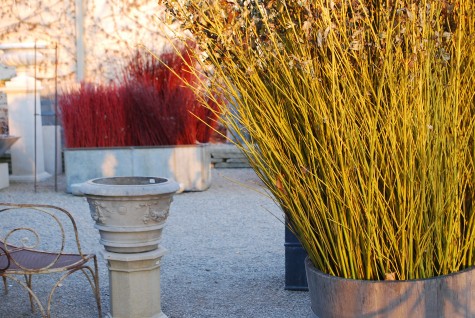 It is no accident that school buses are yellow. Though a school bus is a very large object, that yellow color is what you notice first. National School Bus Glossy Yellow paint was formulated, and adopted for every school bus on the road in the United States in 1939. The black lettering on a school bus read the best in the early morning pickup hours-against this particular color of yellow. Yellow twig dogwood branches are just about that bright-set in a winter landscape.
It is no accident that school buses are yellow. Though a school bus is a very large object, that yellow color is what you notice first. National School Bus Glossy Yellow paint was formulated, and adopted for every school bus on the road in the United States in 1939. The black lettering on a school bus read the best in the early morning pickup hours-against this particular color of yellow. Yellow twig dogwood branches are just about that bright-set in a winter landscape.
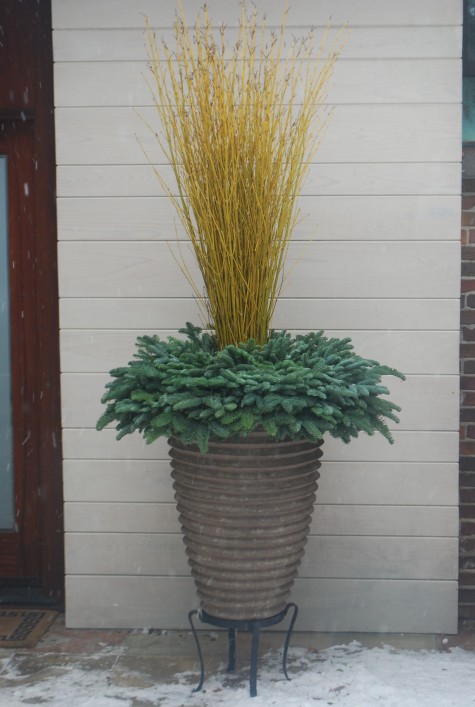 My kitchen is painted a happily intense and rich yellow. The yellow fall color on gingko trees-extraordinary. Yellow twig dogwood-the summer plant is nothing to celebrate, but its bare yellow twigs are visually compelling. A thick bunch of those stiffly vertical twigs say stop, and look at me. My winters may be grey on grey, but I have a few alternatives.
My kitchen is painted a happily intense and rich yellow. The yellow fall color on gingko trees-extraordinary. Yellow twig dogwood-the summer plant is nothing to celebrate, but its bare yellow twigs are visually compelling. A thick bunch of those stiffly vertical twigs say stop, and look at me. My winters may be grey on grey, but I have a few alternatives.
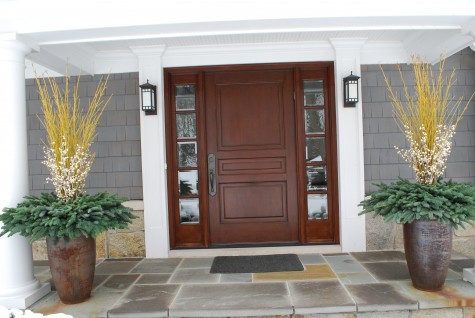 This client’s clapboard house is painted grey. The yellow twig in her pots jump off that grey page. During the summer, I have plenty of yellow; those mostly sunny days happily enrich my garden with a warm yellow light. The winter brings a blue bruised and very cold light. Michigan ranks right up there with big numbers of grey days in the course of a year. My readers in much colder climates-like Minnesota and Wisconsin and Colorado-how I admire how they deal with their cold winters. But friends of mine out west say their winters are by and large sunny. This helps so much to make the cold more tolerable. Their yellow comes regularly from the sky. Ours need come from another source.
This client’s clapboard house is painted grey. The yellow twig in her pots jump off that grey page. During the summer, I have plenty of yellow; those mostly sunny days happily enrich my garden with a warm yellow light. The winter brings a blue bruised and very cold light. Michigan ranks right up there with big numbers of grey days in the course of a year. My readers in much colder climates-like Minnesota and Wisconsin and Colorado-how I admire how they deal with their cold winters. But friends of mine out west say their winters are by and large sunny. This helps so much to make the cold more tolerable. Their yellow comes regularly from the sky. Ours need come from another source.
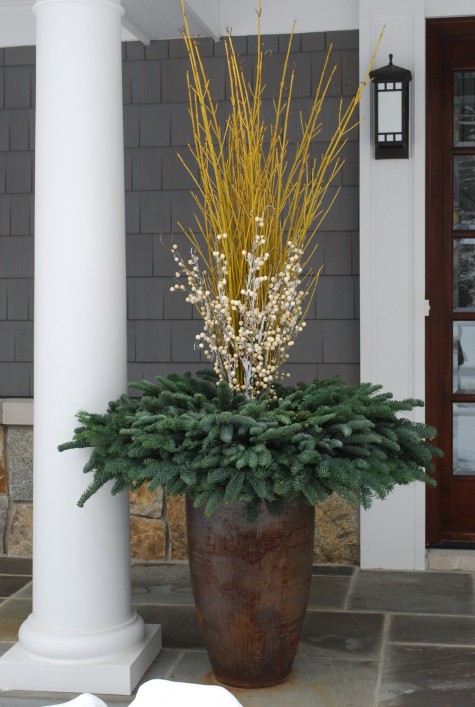 This yellow twig centerpiece has help banishing the winter greys. The white faux berries brighten and heighten that yellow. The yellow in the stone, the grey clapboard-the grey stone porch surface-the contrasting color combinations here engage the eye in a lively way.
This yellow twig centerpiece has help banishing the winter greys. The white faux berries brighten and heighten that yellow. The yellow in the stone, the grey clapboard-the grey stone porch surface-the contrasting color combinations here engage the eye in a lively way.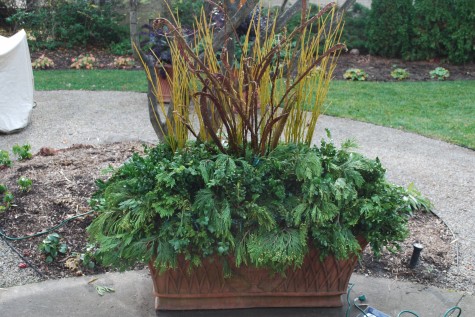 Yellow twigs do a great job of backing up a dark element in a pot. These fan willow stems read so much better, given their yellow backdrop.
Yellow twigs do a great job of backing up a dark element in a pot. These fan willow stems read so much better, given their yellow backdrop.
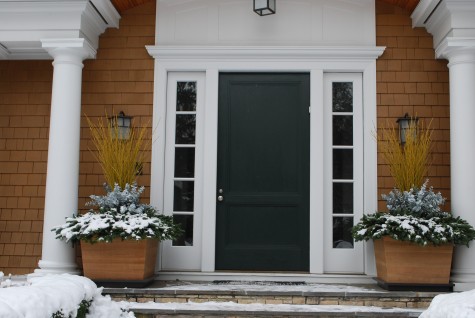 The cinnamon brown siding on this house-beautiful. A pair of teak pots flanking the front door repeat that color. The bunches of yellow twig, the white frost eucalyptus, and the low greens are just plain pretty to look at.
The cinnamon brown siding on this house-beautiful. A pair of teak pots flanking the front door repeat that color. The bunches of yellow twig, the white frost eucalyptus, and the low greens are just plain pretty to look at.
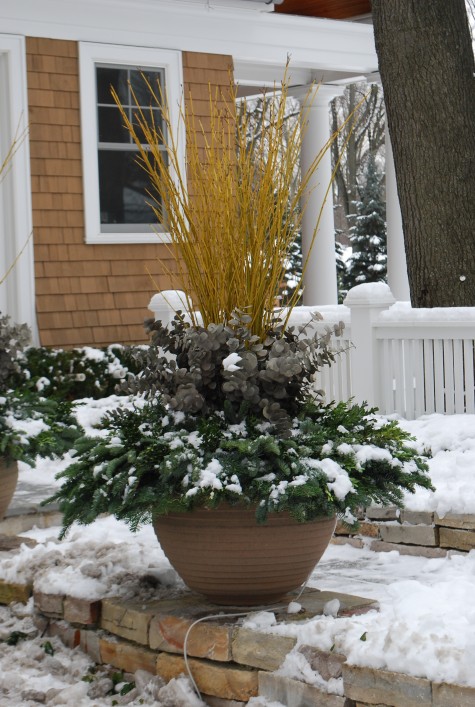 This sage-grey colored eucalyptus is a more unusual color combination, but I chose it as this container is but one of three. Rowdy color combinations can be a bit too much if repeated in close proximity.
This sage-grey colored eucalyptus is a more unusual color combination, but I chose it as this container is but one of three. Rowdy color combinations can be a bit too much if repeated in close proximity.
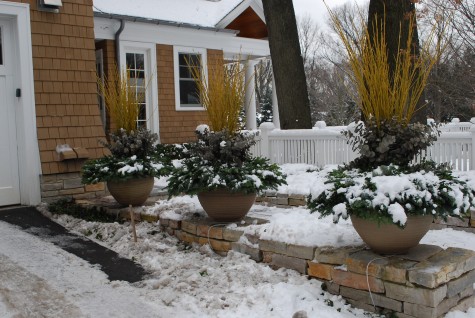
This more subtle composition scheme finds its strength in the repetition. These pots will look amazingly good yet in April, when I plant these pots for spring. These pots would be empty, or in storage for 5 months, barring a winter “planting”.
 There yellow twig stems are placed in the pot singly, rather that as a bunch. Space was left in the center for a stout mossed stick that was covered in lights. The warm C-7 light string brings that yellow to life after hours. The moss treatment at the bottom is in simple contrast to all the fireworks going on up top.
There yellow twig stems are placed in the pot singly, rather that as a bunch. Space was left in the center for a stout mossed stick that was covered in lights. The warm C-7 light string brings that yellow to life after hours. The moss treatment at the bottom is in simple contrast to all the fireworks going on up top.
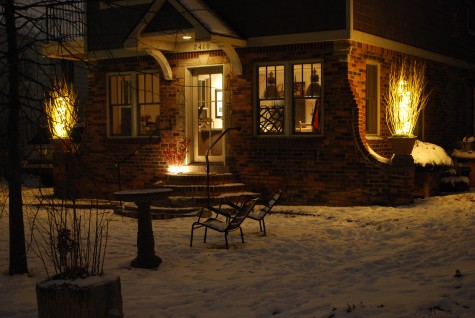
I like these lit yellow twig landscape lighting fixtures. Handsome.
